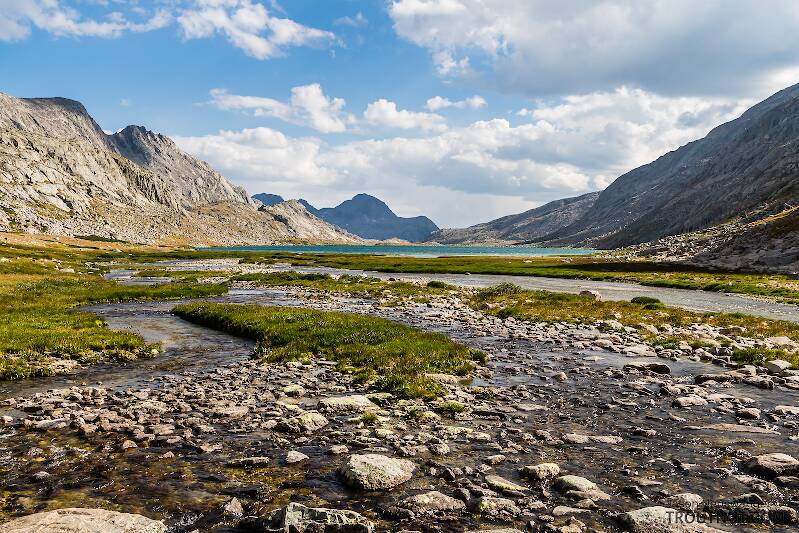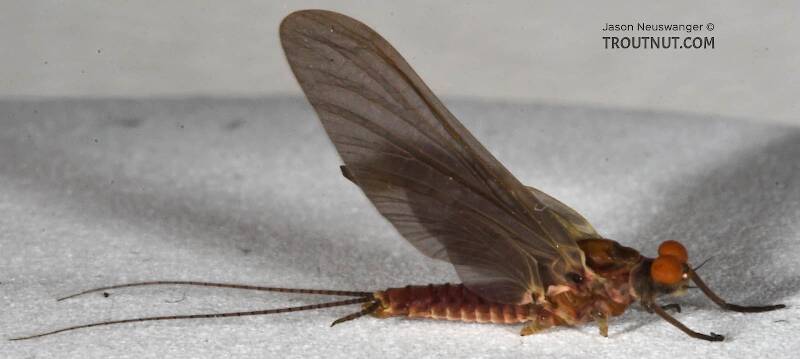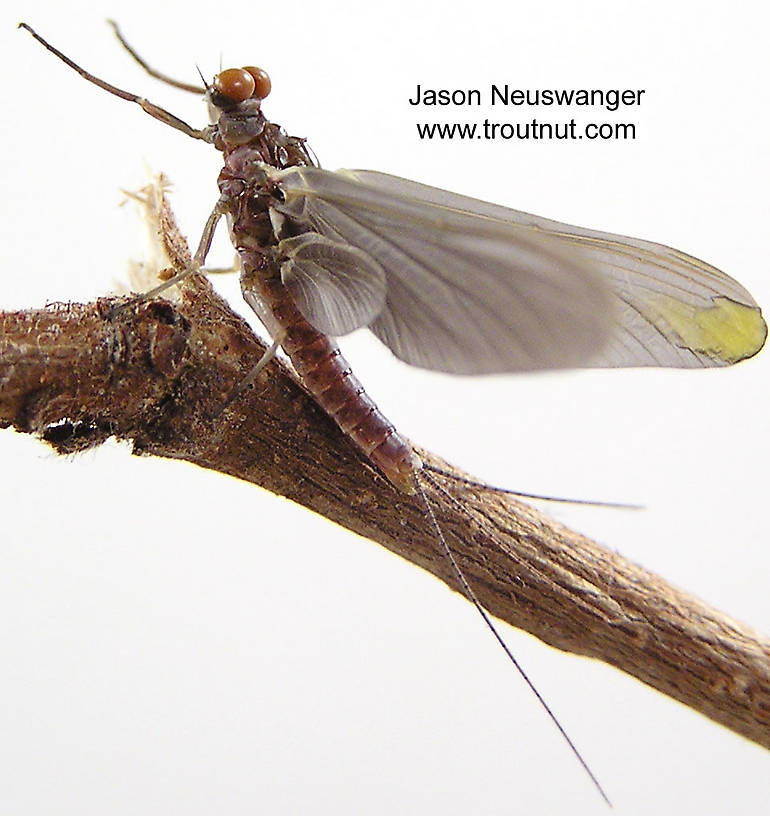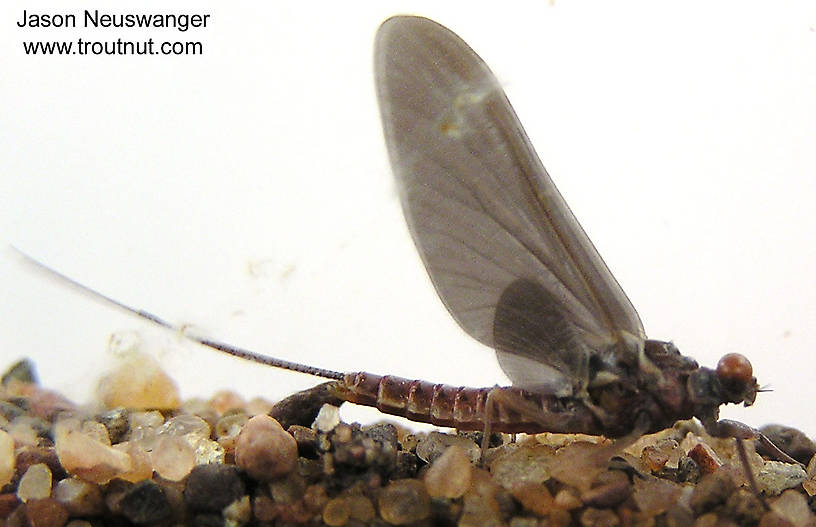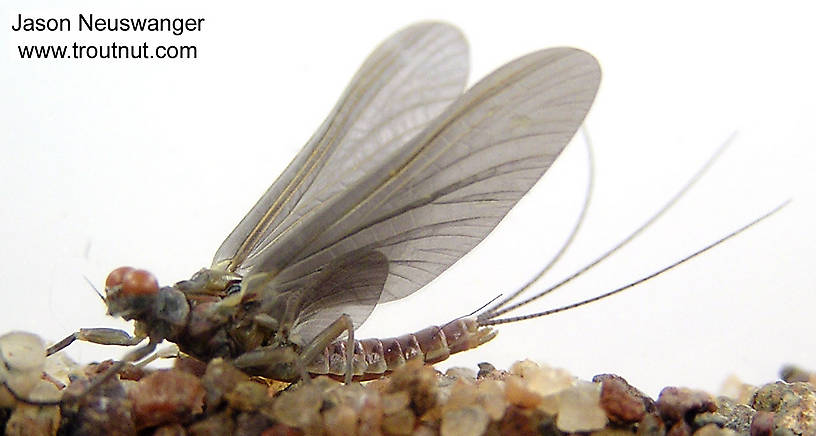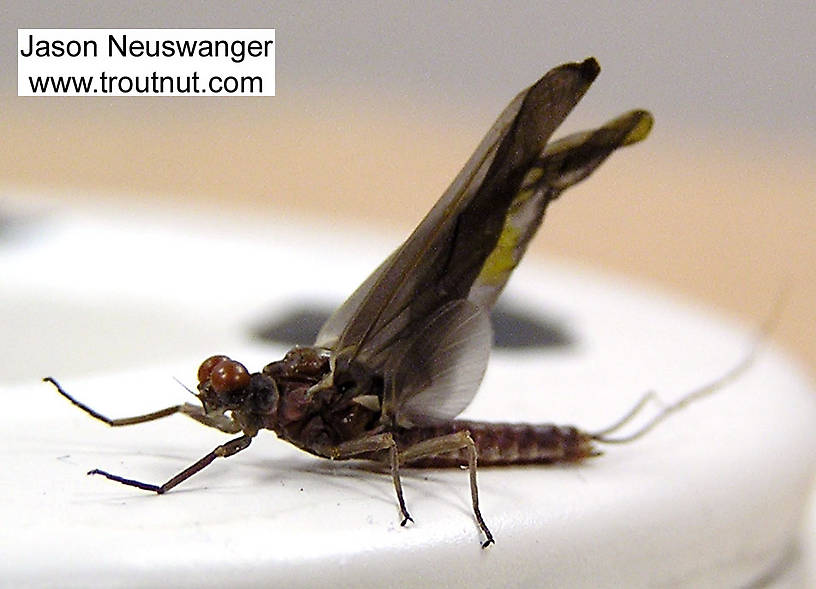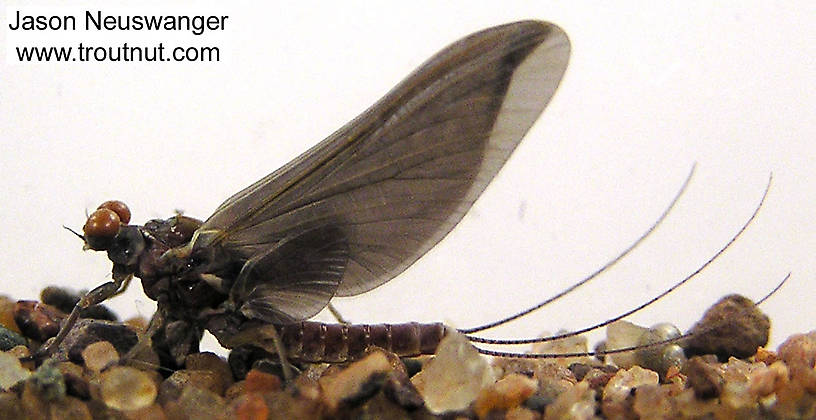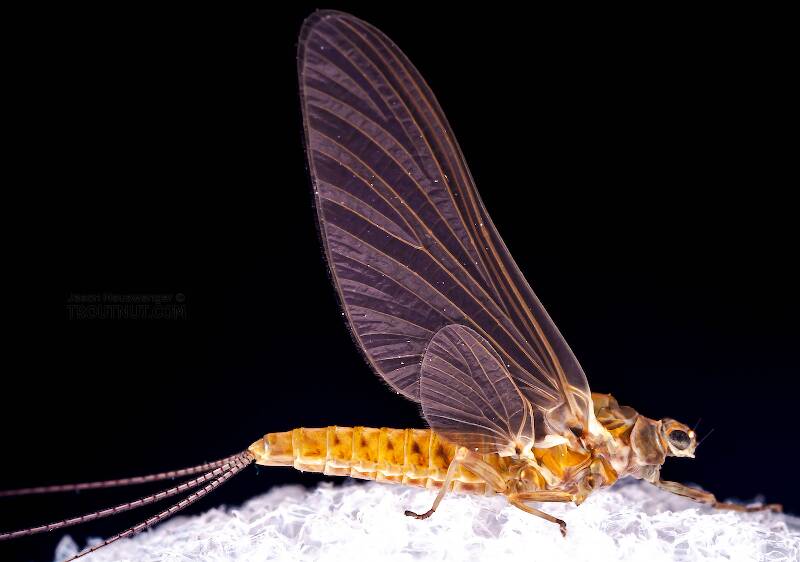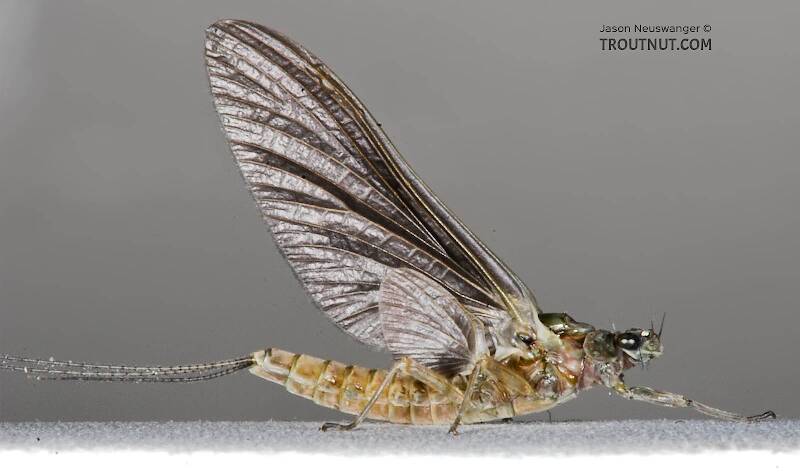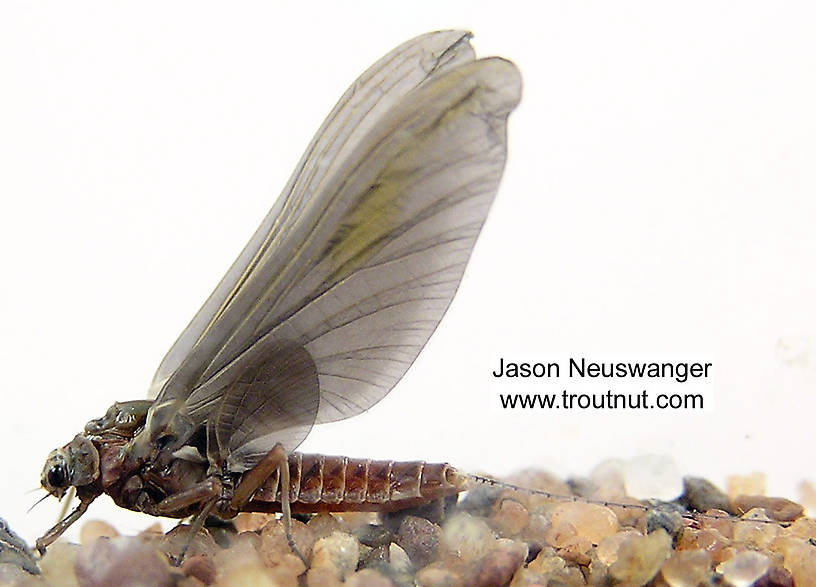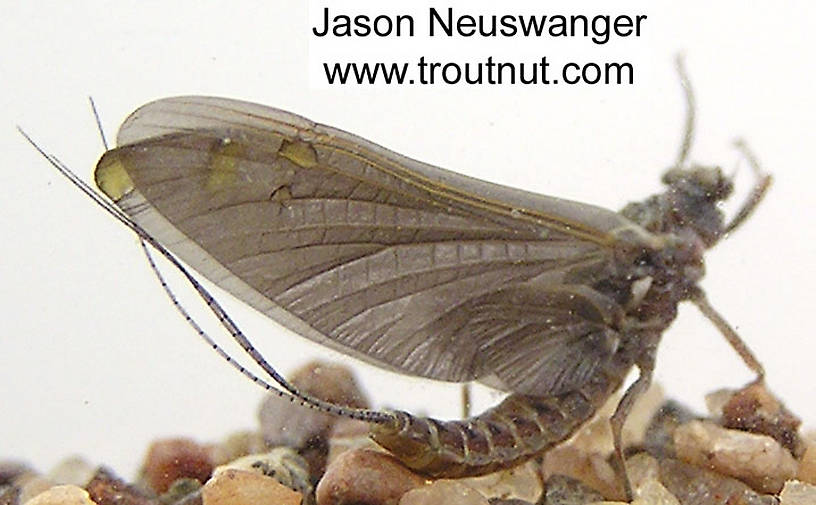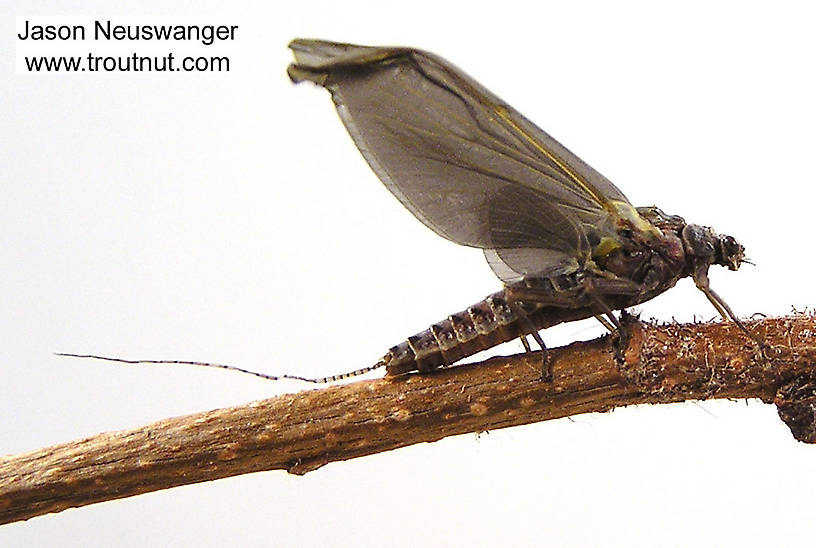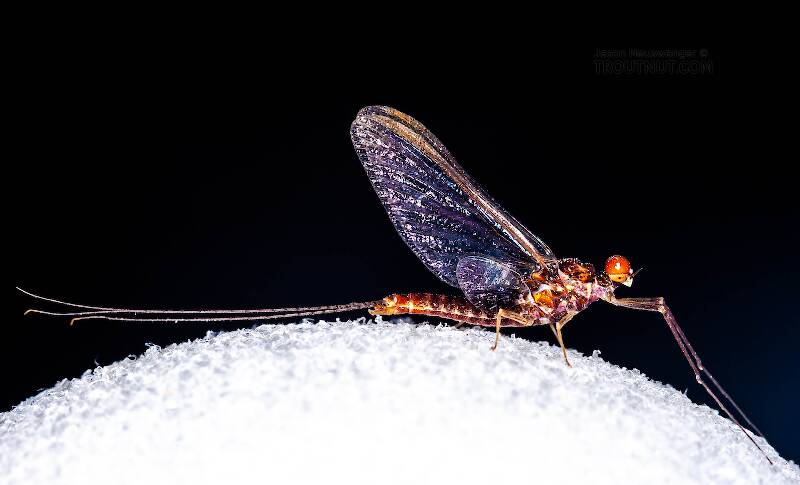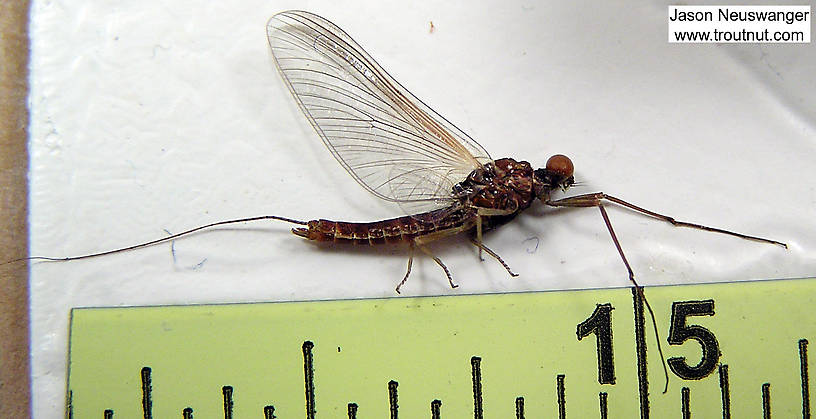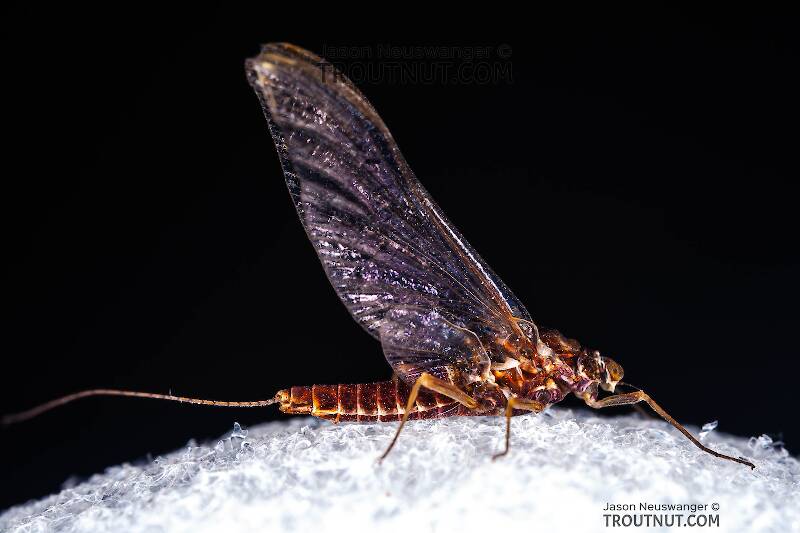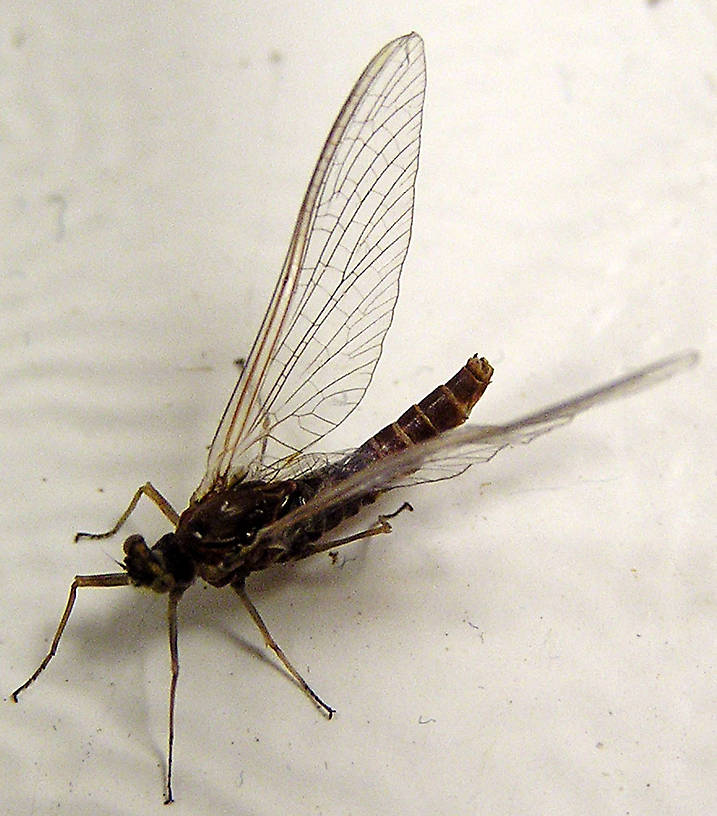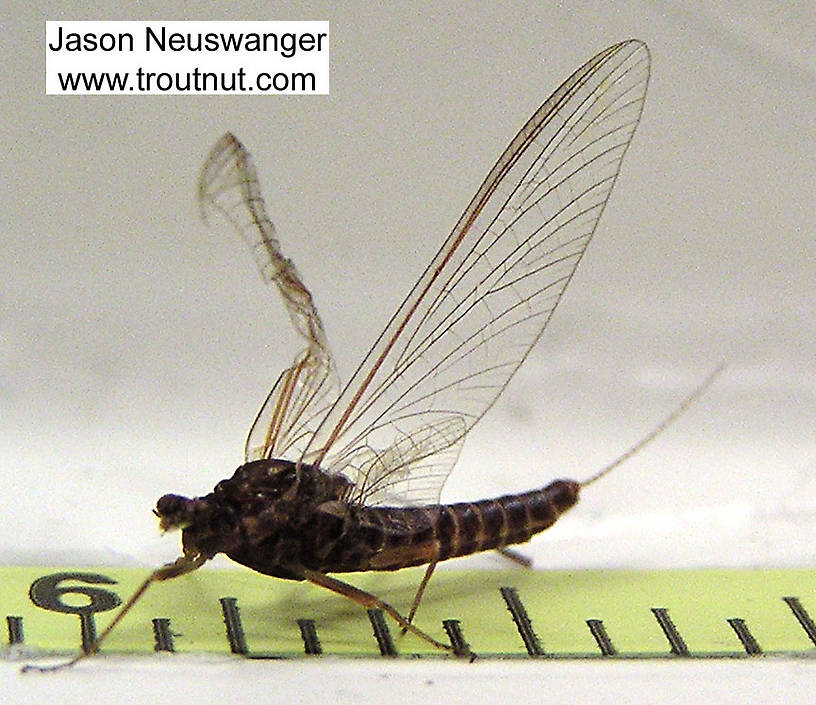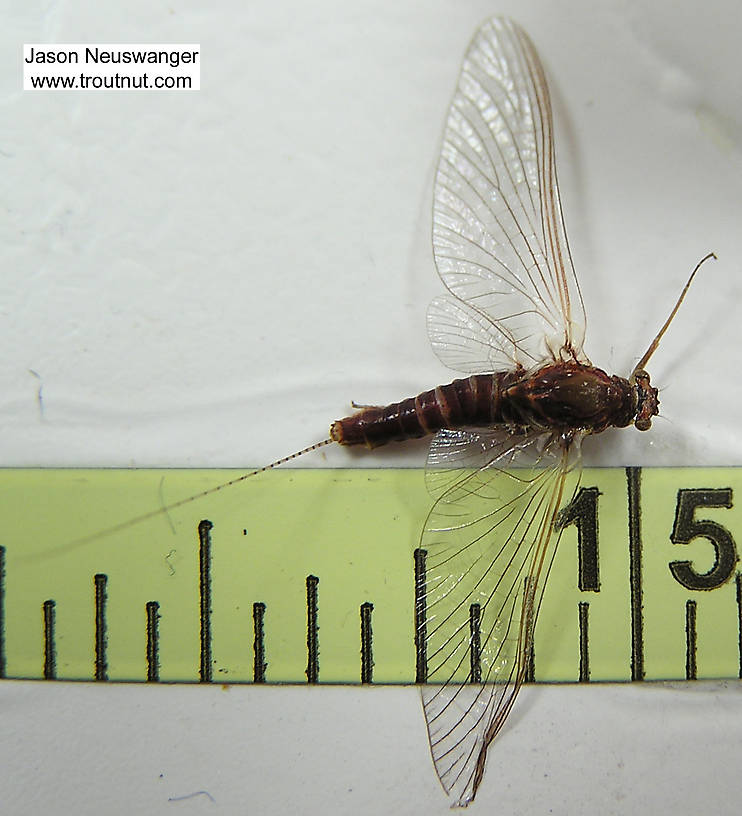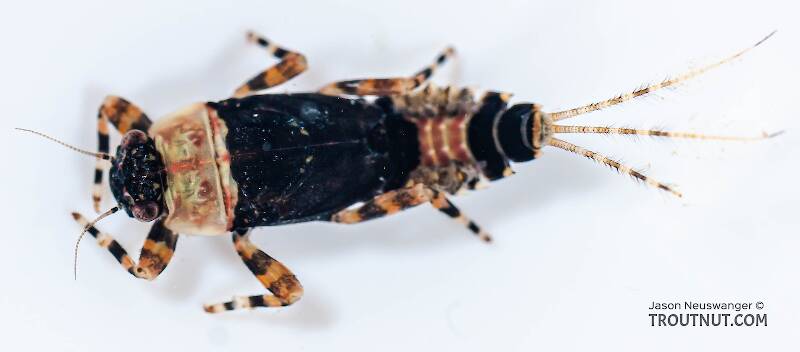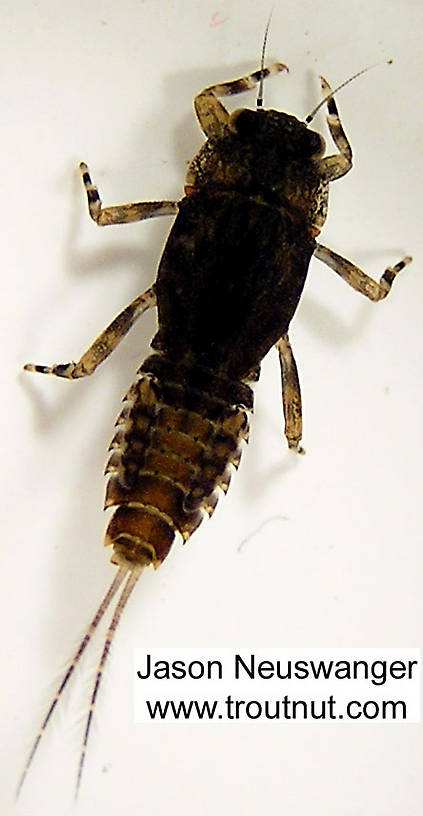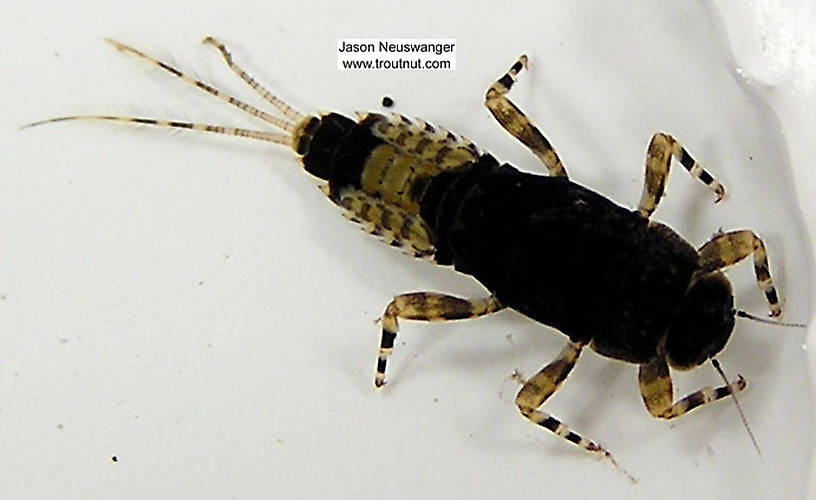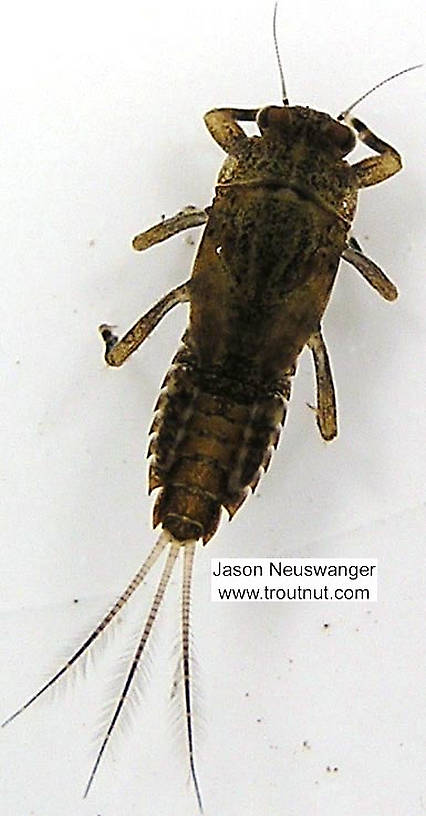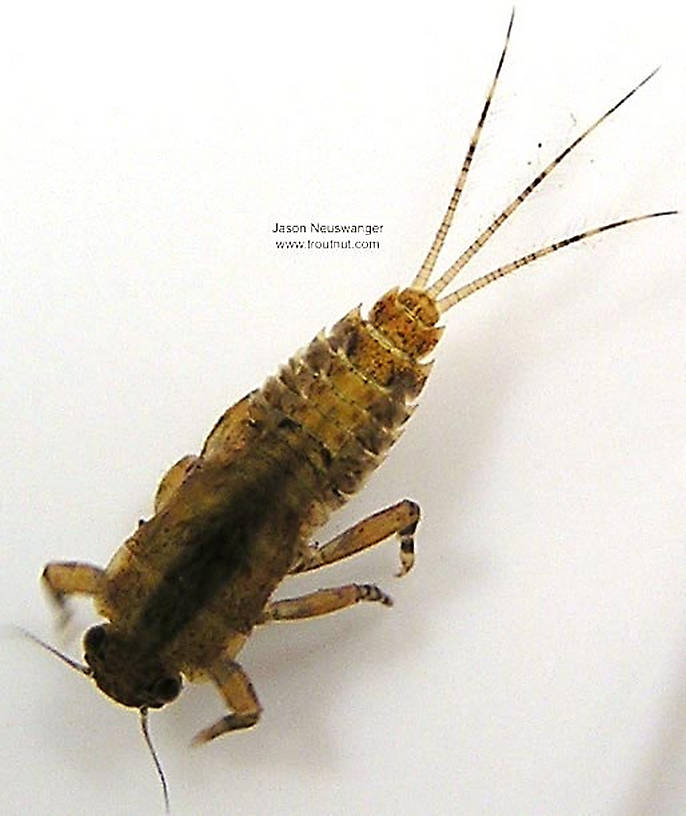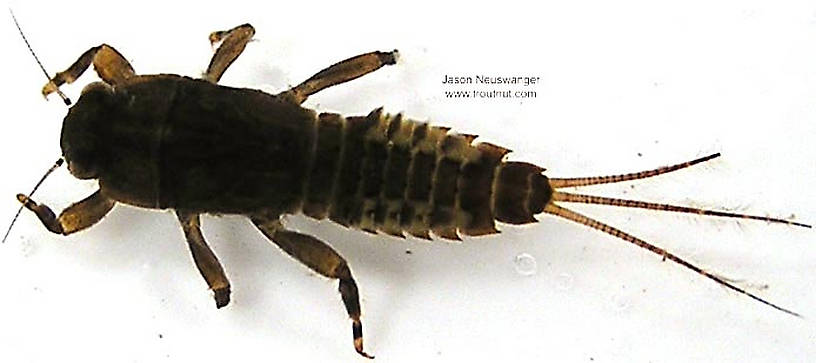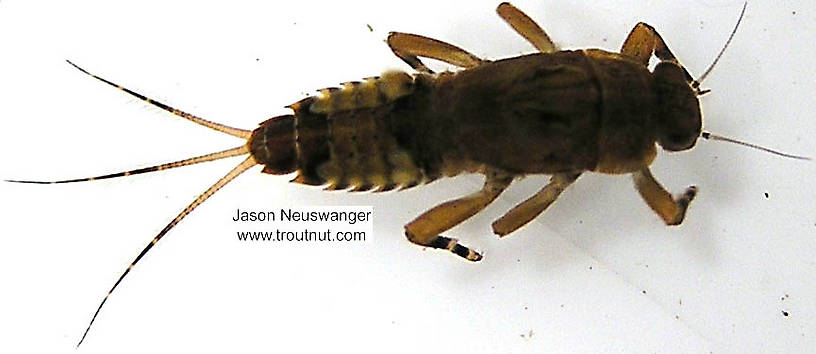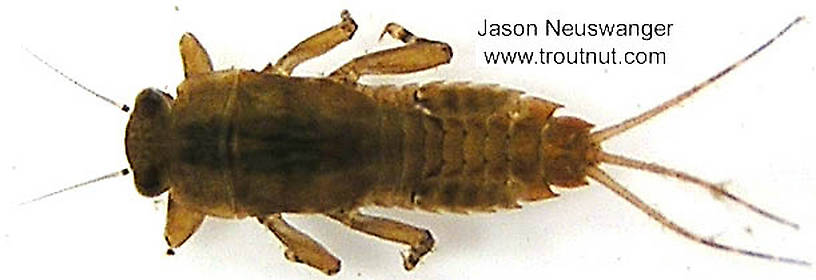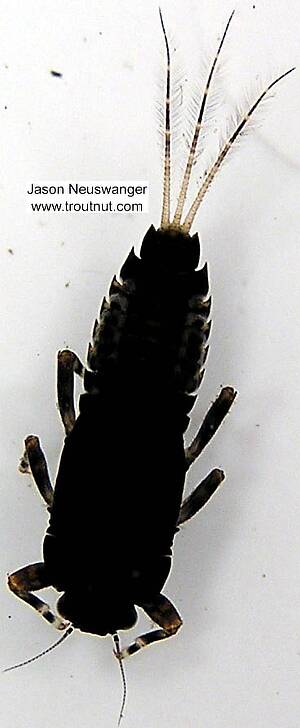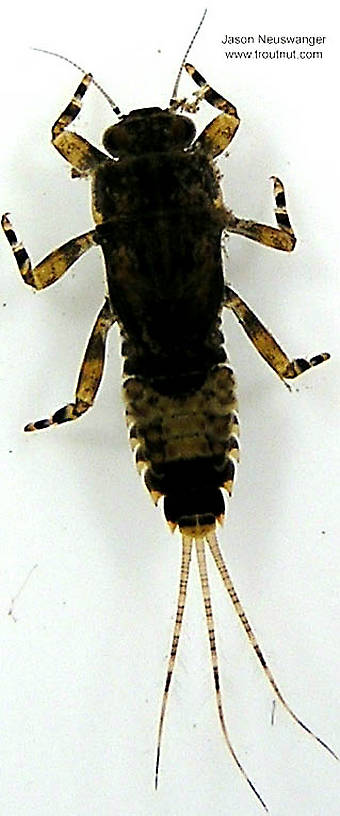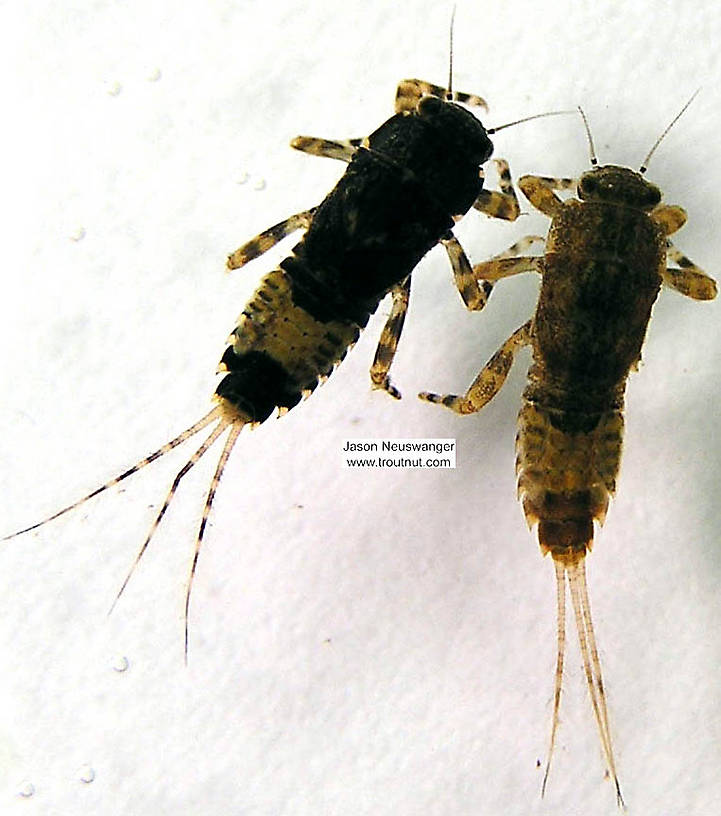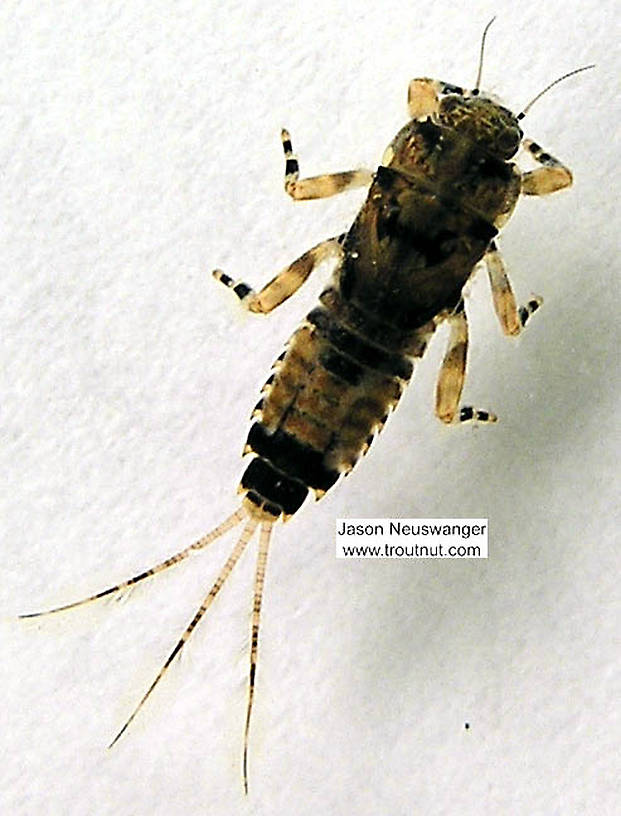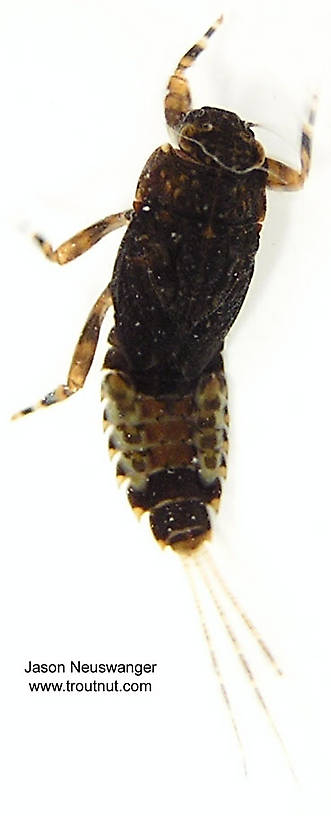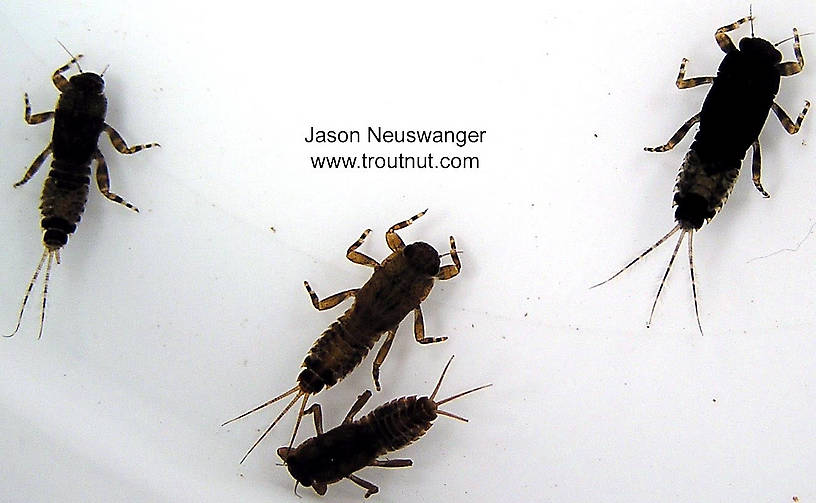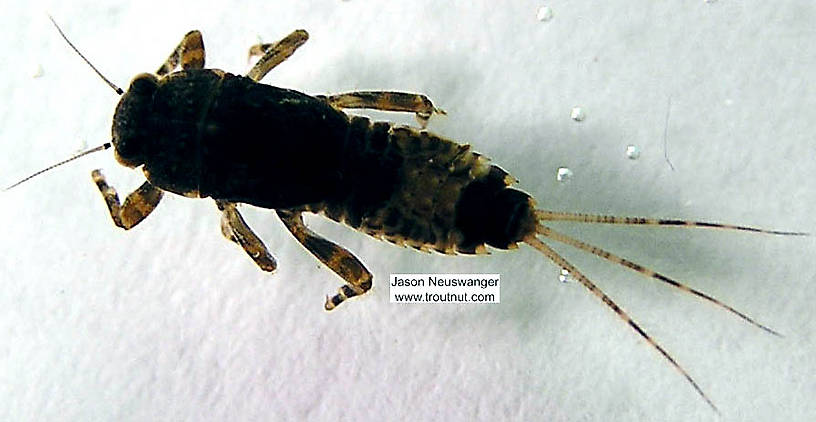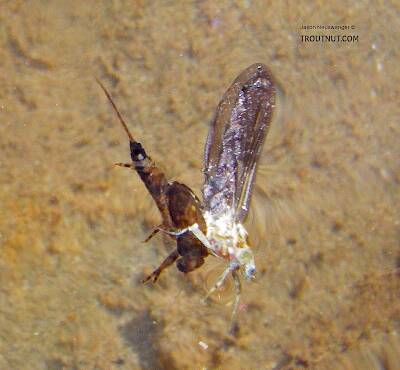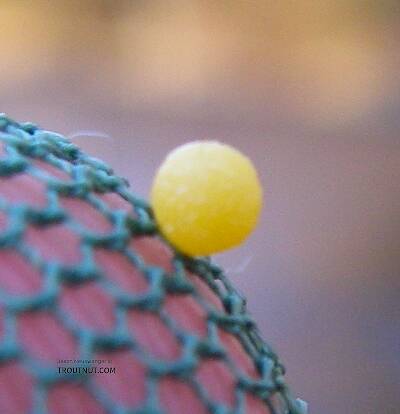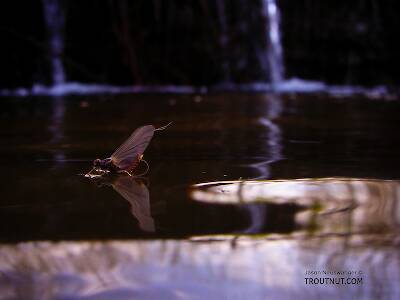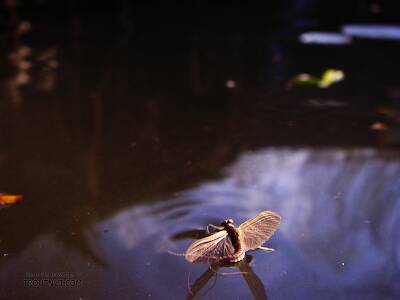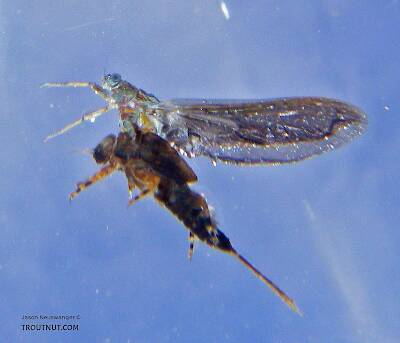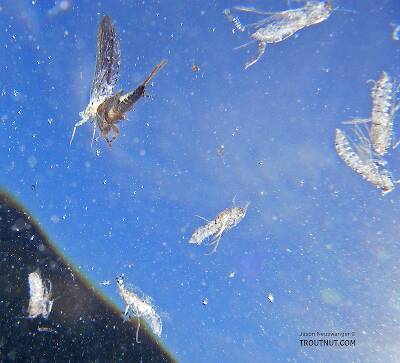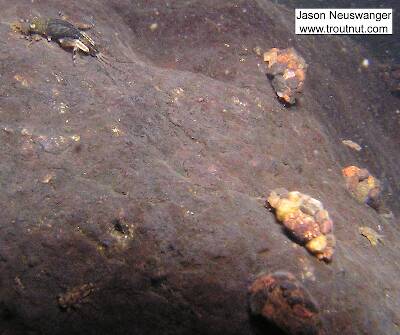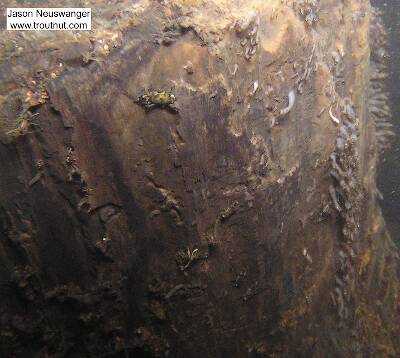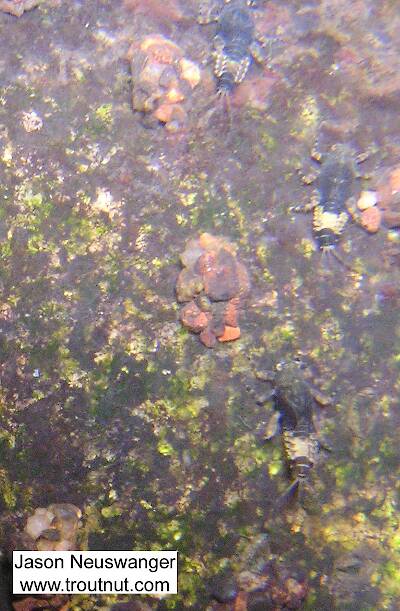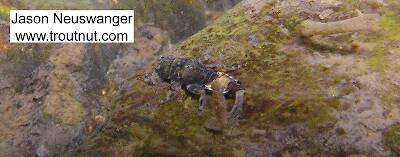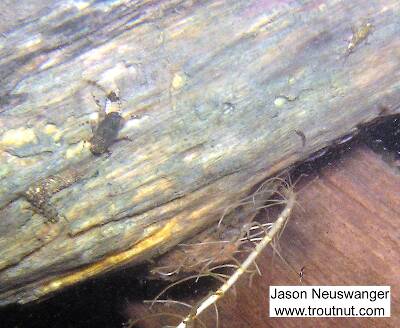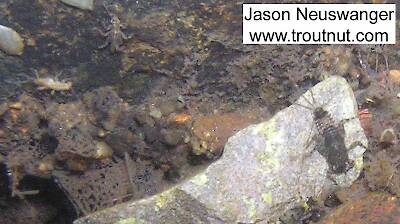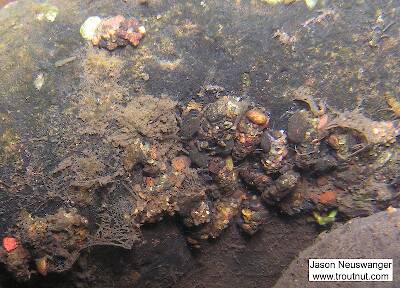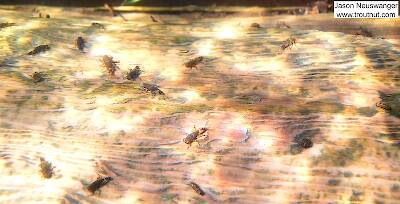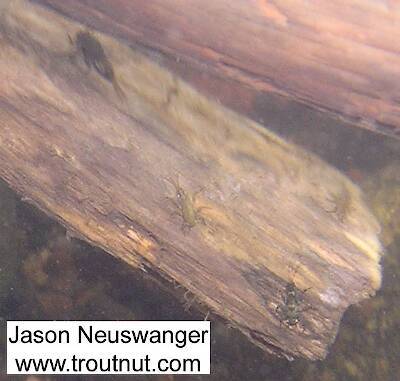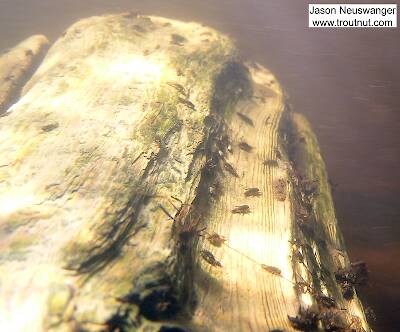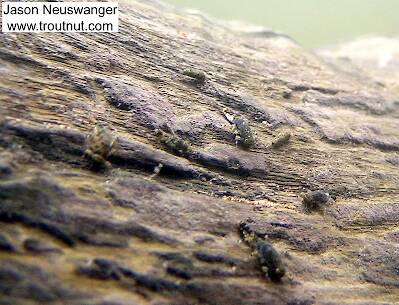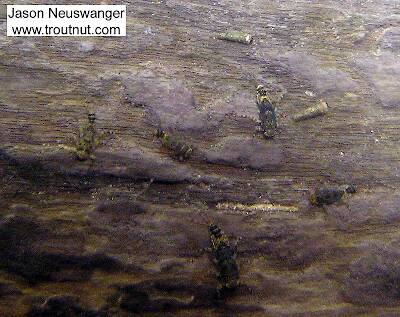
Blue-winged Olives
Baetis
Tiny Baetis mayflies are perhaps the most commonly encountered and imitated by anglers on all American trout streams due to their great abundance, widespread distribution, and trout-friendly emergence habits.

Mayfly Species Ephemerella subvaria (Hendricksons)
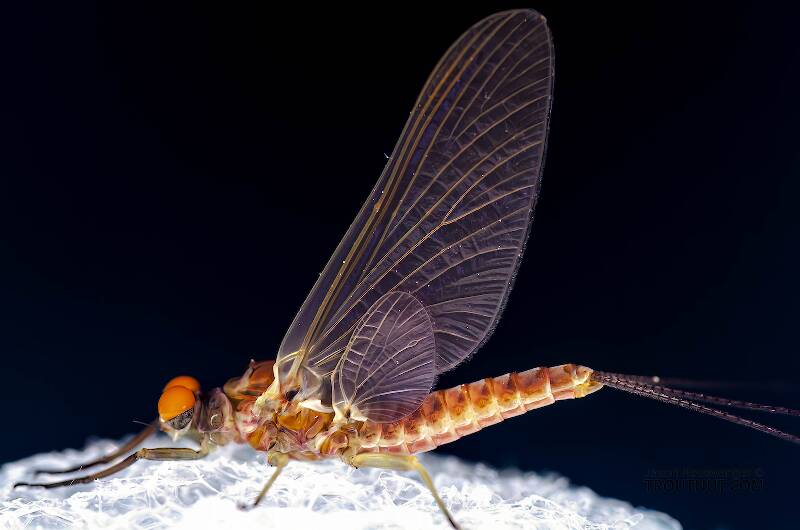
The fame is well-deserved. Ephemerella subvaria is a prolific species which drives trout to gorge themselves. Its subtleties demand the best of us as anglers, and meeting the challenge pays off handsomely in bent graphite and screaming reels.
Where & when
This hatch marks the start of serious mayfly action on almost every major trout water in the East and Midwest in the early spring.The emergence begins in early April in the trout streams of southern Pennsylvania. It peaks in mid-May in the Catskills and late May farther north. It can linger through early June in northern areas like the Upper Peninsula of Michigan.
Good action lasts from two to three weeks on any given river.
In 41 records from GBIF, adults of this species have mostly been collected during May (44%), June (27%), and April (10%).
In 20 records from GBIF, this species has been collected at elevations ranging from 295 to 2372 ft, with an average (median) of 400 ft.
Species Range
Hatching behavior
Time of day : Afternoon, usually mid-afternoon, for about 1 hour
Habitat: Calm water with slow to medium current
Water temperature: Most sources say 50-55 °F, though Fred Arbona reports 55-65 °F
Spinner behavior
Time of day: Late afternoon to evening; or, on cold evenings, delayed until 7-11:00 a.m. the next day
Habitat: Riffles and runs
Knopp & Cormier in Mayflies: An Angler's Study of Trout Water Ephemeroptera contradict the more common story. They acknowledge that sometimes the females drop their eggs from on high, but they claim that Hendricksons more often fall to the water, not yet spent, before releasing their eggs. They report that trout may be selective to spinners with upright, half-spent, or spent wings. Some fly shops sell patterns with bright butts to imitate these egg-laden females.
Nymph biology
Current speed: Everything except extremely fast; they move to slower water near emergence time.
Substrate: Gravel, small boulders, vegetation. Swift gravelly runs are especially favored.
Environmental tolerance: Among the least tolerant species in the family. They require moderate temperatures, neither too hot nor spring-fresh cold, and they cannot tolerate pollution.
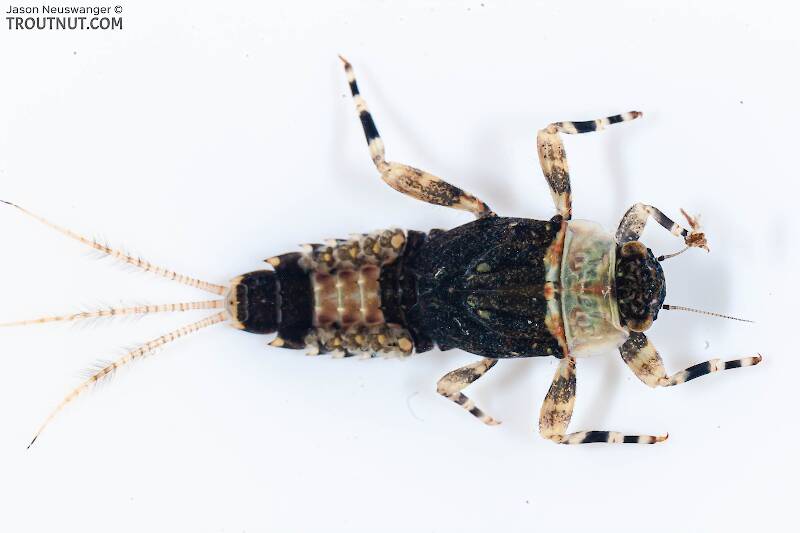
The nymphs are very active and available to trout in the hours leading up to and during the hatch, and sometimes they negate the importance of the duns. This is especially likely on cold days, according to Knopp & Cormier, who recommend fishing a wiggle nymph under such circumstances. Several authors have observed that the nymphs swim with a strong wiggle when in slow water, but they sit back and dead drift in faster currents. Our fishing should reflect this.
Before the hatch, the nymphs repeatedly swim up and down from the surface in what seem like "practice runs" for emergence. Sometimes they do this days or even weeks before emerging; I have seen this behavior in northern Wisconsin on March 17th, over a month before the first emergence on the river.
Ephemerella subvaria Fly Fishing Tips
Comparaduns, emergers, floating nymphs, and wiggle nymphs are especially recommended for this hatch. The angler should also carry a variety of patterns to match the important spinners.There are significant differences between the males and females in both size and color, and anglers should be prepared to match either one.
Wet or cloudy days are traditionally regarded as good Hendrickson weather, although I have fished them under a wide array of conditions, from snowstorms to warmth and sun. If you encounter them on especially damp or stormy days, you've got good reason to try fishing a cripple pattern. A crippled Hendrickson dun imitation might work just as well on a calm, bright, spring day as on a stormy one, but that gives us one less excuse to feel clever about choosing to fish one.
Physical description
Most physical descriptions on Troutnut are direct or slightly edited quotes from the original scientific sources describing or updating the species, although there may be errors in copying them to this website. Such descriptions aren't always definitive, because species often turn out to be more variable than the original describers observed. In some cases, only a single specimen was described! However, they are useful starting points.
Male Spinner
Wing length: 10 mm
A species of the Ephemerella invaria group; close to E. invaria, but distinguished by the prominent dark veins and cross veins; nymph rather similar to E. rotunda (now a synonym of E. invaria), but with distinct dorsal spines, and often paler in color.
Eyes of living male bright red brown. Head deep brown. Thorax deep brown, with reddish tinges on the pleura. Legs deep dull amber; fore femur tinged with smoky, middle and hind femora often with traces of reddish median shading. Wings hyaline; longitudinal and cross veins distinctly light brown; no cross veins in the basal two thirds of the costal and radial spaces.
Abdomen light reddish brown dorsally; shaded laterally with smoky; posterior margins smoky. Ventrally paler reddish brown, the apical sternites somewhat darker. Lateral margin of segments yellowish. Forceps dull yellowish. Penes very similar to Ephemerella invaria; apical spines usually absent. Tails pale, yellowish at base; joinings distinctly smoky brown.
Nymph
Nymph lightly smaller than E. rotunda (now a synonym of Ephemerella invaria), and paler in color; tergites 6 and 7 often almost entirely pale, while 5 has only a dark median subtriangular patch; tergites 8 and 9 always dark. Dorsal spines present on abdomen, much better developed than in rotunda; lateral extensions much as in rotunda. Pale dorsal spots at base of spines not present.
Specimens of the Mayfly Species Ephemerella subvaria
7 Male Duns
5 Female Duns
2 Male Spinners
4 Female Spinners
16 Nymphs
4 Streamside Pictures of Ephemerella subvaria Mayflies:
18 Underwater Pictures of Ephemerella subvaria Mayflies:
Discussions of Ephemerella subvaria
Start a Discussion of Ephemerella subvaria
References
- Arbona, Fred Jr. 1989. Mayflies, the Angler, and the Trout. Nick Lyons Books.
- Caucci, Al and Nastasi, Bob. 2004. Hatches II. The Lyons Press.
- Fauceglia, Ted. 2005. Mayflies . Stackpole Books.
- Knopp, Malcolm and Robert Cormier. 1997. Mayflies: An Angler's Study of Trout Water Ephemeroptera . The Lyons Press.
- Leonard, Justin W. and Fannie A. Leonard. 1962. Mayflies of Michigan Trout Streams. Cranbrook Institute of Science.
- Needham, James G., Jay R. Traver, and Yin-Chi Hsu. 1935. The Biology of Mayflies. Comstock Publishing Company, Inc.
- Schwiebert, Ernest G. 1955. Matching the Hatch. MacMillan Publishing Company.
- Swisher, Doug and Carl Richards. 2000. Selective Trout. The Lyons Press.
Mayfly Species Ephemerella subvaria (Hendricksons)
Species Range
Common Names
Resources
- NatureServe
- Integrated Taxonomic Information System
- Global Biodiversity Information Facility
- Described by McDunnough (1931)

